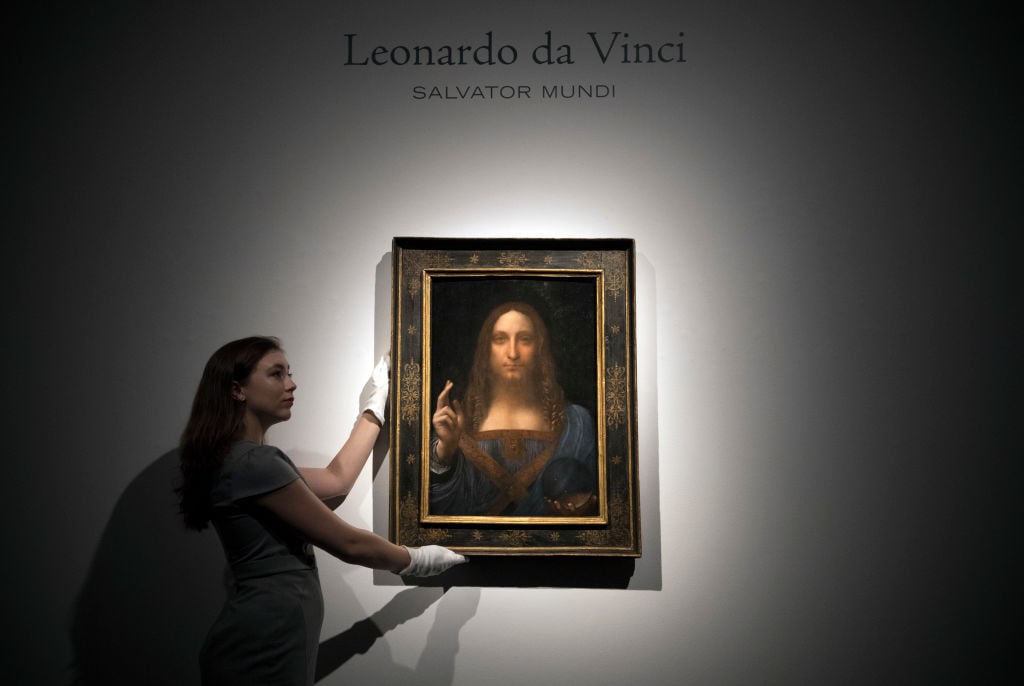
An internationally renowned Leonardo expert and curator at the Met says Christie’s wrongly implied that she was among the scholars to attribute the $450 million Salvator Mundi to Leonardo da Vinci.
Carmen C. Bambach, a world-leading specialist on the Renaissance master who is also the curator of drawings and prints at the Metropolitan Museum of Art, reiterated her belief that most of Salvator Mundi was undertaken by the artist’s assistant, Giovanni Antonio Boltraffio. In her soon-to-be published book on Leonardo, Bambach suggests that the artist was only responsible for “small re-touchings” of the world’s most expensive painting.
Bambach also does not want the National Gallery in London to suggest that she agreed with its description of the painting as a signature work by the artist. She was among a group of scholars invited to London in 2008 by the National Gallery to view the work. In 2011, the National Gallery took the controversial decision to borrow the painting for its exhibition, “Leonardo da Vinci: Painter at the Court of Milan,” which was co-organized by Luke Syson, who went on to become the head of European sculpture and decorative arts at the Met. (Syson is now the director of the Fitzwilliam Museum at the University of Cambridge, which did not respond to a request for comment by publishing time.)
Speaking to the Guardian, Bambach said she was surprised when the National Gallery contacted her earlier this month, asking if she would agree to have her name listed among those scholars who had seen the painting in 2008. “I wasn’t really asked what I thought about the Salvator Mundi at the time,” she says. “If my name is added to that list, it will be a tacit statement that I agree with the attribution to Leonardo. I do not.”
A spokesman for the National Gallery declined to comment on the “private” correspondence with Bambach. In a statement sent to artnet News, the museum defended displaying the “new discovery as it was an important opportunity to test a new attribution by direct comparison with works universally accepted as Leonardo’s.”
In Christie’s catalog on Salvator Mundi, published ahead of its record-breaking sale, the auction house listed Bambach as a scholar who had attributed the painting to the Renaissance master within what was described as “a broad consensus that the Salvator Mundi was painted by Leonardo.” The curator told the Guardian: “That is not representative of my opinion.”
In 2017, Salvator Mundi sold for $450 million to Saudi Prince Badr bin Abdullah. The kingdom’s minister of culture is close to Crown Prince Mohammed bin Salman, who is believed to be behind the spectacular acquisition—the painting has not been seen in public since the sale. Last year, its highly anticipated unveiling at the Louvre Abu Dhabi was indefinitely postponed and, last week, the Guardian reported that the Louvre in Paris might not show Salvator Mundi in its blockbuster exhibition in the fall. According to Ben Lewis, the author of The Last Leonardo, curators at the Louvre believe the painting should only be attributed to the workshop of Leonardo.
“The attribution to Leonardo was established almost 10 years prior to sale by a panel of a dozen scholars and was reconfirmed at the time of sale in 2017,” a Christie’s spokesperson said. “While we recognize that this painting is a subject of enormous public opinion, no new discussion or speculation since the 2017 sale at Christie’s has caused us to revisit its position.”
Bambach’s four-volume publication, Leonardo da Vinci Rediscovered, is due to be published on June 25 by Yale University Press.